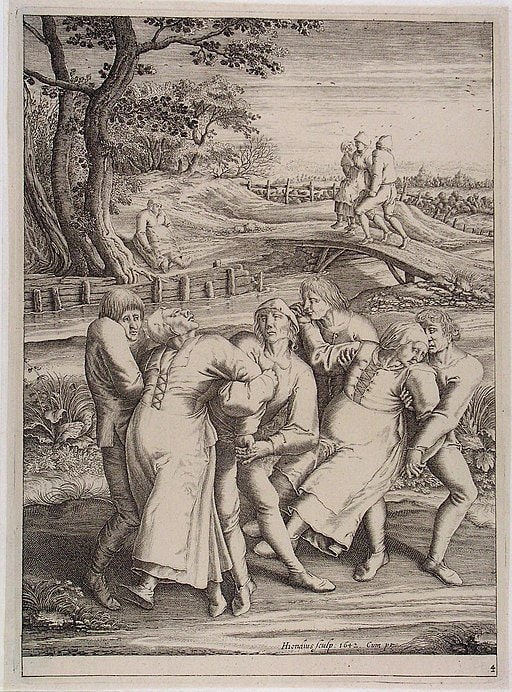Imagine waking up one day and finding your entire town swept up in a dancing frenzy. It sounds like the plot of a quirky movie (Footloose, anyone?), but in the summer of 1518, this strange event actually occurred in Strasbourg, a town in Alsace, which is modern-day France.
It all started when a woman named Frau Troffea began dancing in the streets for no apparent reason. Her fervent dance continued for days, and soon, others joined her. Within a week, dozens of people were dancing uncontrollably in the streets, and the numbers kept growing.

This peculiar phenomenon, known as the Dancing Plague of 1518, puzzled everyone. The dancers were relentless, moving without rest, some even collapsing from exhaustion or succumbing to heart attacks and strokes. The town’s leaders were desperate to find a solution, but their initial attempts only seemed to make things worse.
In a bid to cure the afflicted, authorities set up a stage and hired musicians, hoping that organized dancing would help them dance the madness away. Unfortunately, this plan backfired, and even more people joined the frenzied dance.
- Timeline of World History is a unique work of visual reference that puts the worlds kingdoms, empires, and civilizations in context with one another.
- A giant wall chart shows the timelines and key events for each region of the world, and four additional foldout charts display the history of the Americas, Europe, Asia and the Pacific, and Africa and the Middle East.
- Packed with maps, diagrams, and images, this book captures the very essence of our shared history.Packed with maps, diagrams, and images, this book captures the very essence of our shared history.
Prices pulled from the Amazon Product Advertising API on:
Product prices and availability are accurate as of the date/time indicated and are subject to change. Any price and availability information displayed on [relevant Amazon Site(s), as applicable] at the time of purchase will apply to the purchase of this product.
**As an Amazon Associate, The History Box may earn commissions from purchases made through this link.**
It wasn’t just the poor Strasbourgians, there are records of similar dance hysteria from Switzerland, Holland, and Germany.
Historians have debated the cause of the Dancing Plague, with theories ranging from stress-induced mass hysteria to ergot poisoning, caused by a toxic mold found in rye bread. Whatever the cause, the dancing eventually subsided as mysteriously as it had begun, leaving behind a baffled and weary town.


